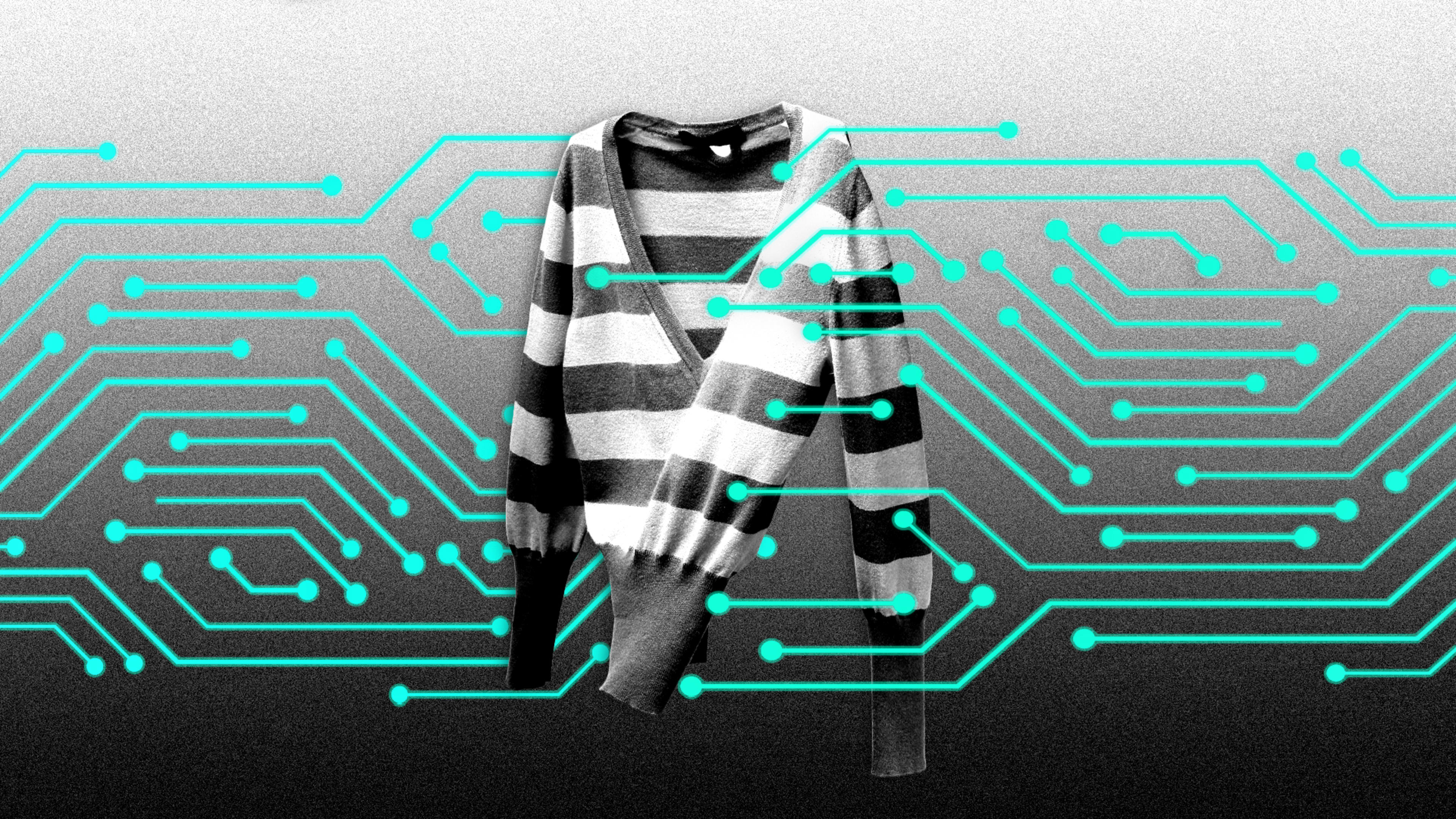Imagine an article of clothing that could tell your washing machine how to keep its colors from fading. Imagine a piece of clothing that could warm your body in the winter and cool it down in the summer. Imagine wearing clothes that weren’t designed last year, or last season, but yesterday, in response to that day’s buying patterns. Imagine being able to fully customize every article of clothing in your wardrobe for the same cost as mass-produced items.
And imagine a clothing industry that could do all of this while significantly reducing emissions and retaining most of its workforce.
Thanks to new advancements in manufacturing, you won’t have to imagine forever. While the clothing we wear today is largely designed, manufactured, and sold in the same way it was 100 years ago, what we wear is expected to change dramatically in the not-so-distant future, thanks to advancements in manufacturing technology.
According to McKinsey & Company’s Industry 4.0: Reimagining manufacturing operations after COVID-19 report, advanced manufacturing—or “Industry 4.0,” in reference to the fourth industrial revolution—has the potential to dramatically improve efficiency for manufacturers of all shapes and sizes. The report explains that the next industrial revolution will be enabled by four primary technology advancements: increased connectivity, data, and computational power; analytics and machine learning/artificial intelligence; human-machine interaction; and advanced engineering.
“The amount of data that plants produce has risen quite a bit, with sensors becoming cheaper, with storage becoming cheaper, so now engineers have huge quantities of data to draw from,” explains Berk Birand, the CEO of Fero Labs, a software company that develops machine learning and AI solutions for the manufacturing sector. “It’s not possible for an engineer to plug 10,000 different parameters into Excel and try to figure out manually which exact setup leads to improvements, and this is where machine learning and AI come in.”

“The knitting, crocheting, sewing part of the process is very manual,” says Birand. “The first crocheting machine came out in 2018 or so. There are printers that can output a printed sweater, but they’re very expensive, and there’s a very low throughput, it takes a really long time, so it’s not feasible at scale.”
Early signs of a new industry
Despite these limitations, a number of significant advancements are poised to bring the clothing industry into the 21st century. A recent white paper produced by the World Economic Forum in partnership with McKinsey & Company exploring advances in manufacturing technology highlighted Alibaba, a Chinese e-commerce platform, for its ability to design products, including clothing, based on consumers’ real-time behavior.
“They created an entire customer connectivity [platform] with demand sensing, understanding through social media in clothes but also by connecting to customer demand patterns,” explains Enno de Boer, a partner at McKinsey and coauthor of the white paper. “They’re propagating that signal into the value chain, on the one hand in the product development side where they develop new apparel, and they’ve digitized their entire process to have 75% less time to develop a product.”
A faster development cycle coupled with a customer connectivity platform allows Alibaba to adjust its production cycle based on real-time demand. De Boer adds that the global clothing brand Zara is experimenting with similar technologies.
The traditional model of designing clothes a year or more in advance of its sale will quickly become obsolete.
In other words, the traditional model of designing clothes a year or more in advance of its sale will quickly become obsolete and be replaced by real-time trends. In the future, de Boer imagines a clothing industry that evolves from seasonal design cycles to daily.
He adds that the dream of mass customization—where individuals can design and purchase their own clothing at the same price point as mass-produced items—is quickly becoming a reality. As the cost and scale of production decreases, individuals and startups have a new opportunity to enter a clothing industry that has historically been dominated by major brands.
FitMyFoot, for example, uses its smartphone app to scan customers’ feet and 3D-prints custom-made sandals and fitted insoles, complete with their name. According to a 2019 study conducted by Lectra, a France-based manufacturing technology provider, nearly half of the 308 apparel, accessory, and footwear brands surveyed are creating smaller production runs to serve specific markets. Furthermore, 40% are manufacturing closer to market, and nearly 33% are shortening development timelines through digitization, inching the industry closer to mass customization.
“Through mass customization and through all of this technology we can go to smaller production sizes, so we don’t need the big mega factories; you can be competitive with just one line,” he says. “The time is better than ever for smaller companies, for startups, to be competitive.”
Clothing that knows itself
Today, labels tell us where our clothing is manufactured, what it’s made of, and how to care for it, but a shift toward electronic RFID tags will expand those profiles dramatically, and even feed washing instructions directly into washing machines. It might sound futuristic, but Haier, a global appliance manufacturer, has already begun developing what it calls the “Internet of Clothing.”
“In partnership with the apparel manufacturer and retailer they have created a digital platform where they’re all exchanging data that is stored on the RFID chips,” says de Boer. “What they can do with that, which is quite interesting, is you can steer the washing cycle based on what apparel is in your washing machine.”
Chanakya Ramdev, Sweat Free ApparelIn terms of the clothing tech we are wearing, it is the exact same as what our grandparents and our great grandparents wore.”
“The shirt you have on, you don’t know the C02 footprint, who has put hands on it, how far it’s traveled through the world, but that’s the transparency that consumers are demanding in the future,” he says. “You will be able to see what is the C02 footprint, what is the water footprint, whether it’s been produced sustainably, and that will drive more sustainable production.”
Startups will help drive innovation
The clothing industry as it stands today is largely driven by global brands, but when it comes to technological innovation, most are focused on cost reduction and sustainability, rather than updating the product itself. As a result, some of the latest innovations in clothing technology are coming from the smallest of players.
In 2014, during a co-op placement in Hong Kong, then-University of Waterloo engineering student Chanakya Ramdev was frustrated that he had to wear a suit every day in the hot and humid climate. “Over the month I was there I ended up ruining two of my suits, which was all the suits I had,” he says. “I thought, ‘It’s 2014, sweat stains is something that should have been solved hundreds of years ago.'”
After returning home to Canada, Ramdev began developing clothing finishes that prevented sweat stains and smell. He explains that clothing is often designed with antimicrobial qualities, but studies have found those treatments wash out easily. In fact, each washing cycle releases up to 700,000 microplastic fibers, which are not only damaging to marine life and the environment but are also prevalent in our drinking water. “If you can do a chemical bond to the fabric of those particles, they stay a lot longer, so it actually keeps those features for much longer as it goes through wash cycles,” he says.

Depending on the severity of the pandemic, Ramdev hopes to pivot back toward clothing this summer. In the coming years, he also hopes to develop clothes that can help regulate body temperature. He explains that clothes that can provide electronic heating already exist today, but he wants to develop the technology to offer cooling as well. “Putting that in a garment, and making sure it’s machine washable, is one of the big things we’re hoping to do,” he says, adding that he hopes to accomplish that goal within two or three years.
Ramdev knows that he’s going up against a multi-billion-dollar industry almost entirely alone, but he believes it will be up to startups such as his to innovate in one of the world’s oldest industries, as the existing players have little incentive to innovate beyond cost-reduction measures.
“In terms of the clothing tech we are wearing, it is the exact same as what our grandparents and our great-grandparents wore,” he says. “What I’m trying to do is bring us into this century when it comes to our clothes.”
Recognize your brand’s excellence by applying to this year’s Brands That Matter Awards before the early-rate deadline, May 3.
